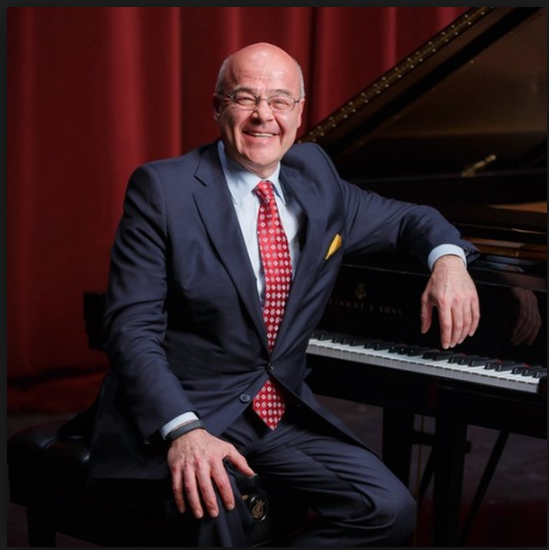|
Symphony
SRS SEASON ENDS WITH RESOUNDING TA-TA-TA-BANG
by Terry McNeill
Sunday, June 1, 2025
Symphony
YOUTHFUL VIRTUOSITY ON DISPLAY AT USO'S MAY CONCERTS
by Peter Lert
Saturday, May 17, 2025
Symphony
MYSTICAL PLANETS AND LIVELY GERSHWIN ORTIZ AT FINAL SRS CONCERT
by Peter Lert
Sunday, May 4, 2025
Symphony
VSO'S CONCERT MUSIC OF TIME, MUSIC OF PLACE
by Peter Lert
Sunday, April 27, 2025
Choral and Vocal
VOCAL ELEGANCE AND FIRE AT THE 222'S RECITAL APRIL 26
by Pamela Hicks Gailey
Saturday, April 26, 2025
CANTIAMO SONOMA SINGS AN INSPIRED GOOD FRIDAY MOZART REQUIEM CONCERT
by Pamela Hicks Gailey
Friday, April 18, 2025
DRAMATIC SHOSTAKOVICH SYMPHONY CLOSES PHILHARMONIC'S 25TH SEASON
by Terry McNeill
Sunday, April 13, 2025
LARGE COLLEGE OF MARIN AUDIENCE GREETS STOPHER ARTISTRY
by Terry McNeill
Saturday, April 5, 2025
Chamber
FRISSON DELIVERS SHIVERS OF DELIGHT
by Abby Wasserman
Sunday, March 30, 2025
OLD AND MOSTLY NEW IN SRS MARCH CONCERT IN WEILL
by Peter Lert
Saturday, March 22, 2025
|
 |
 Pianist Alexander Toradze |
ALEXANDER TORADZE DELIVERS A LESSON IN SERENITY
by Steve Osborn
Sunday, May 5, 2019
An entire concerto movement consisting of serene piano melodies over a soothing backdrop is probably not the first thing that springs to mind when seeing Shostakovich’s name on an orchestra program, but that’s exactly what pianist Alexander Toradze delivered--twice--at Sunday’s Santa Rosa Symphony concert, led by conductor emeritus Bruno Ferrandis.
The movement in question was the central Andante of Shostakovich’s Piano Concerto No. 2, a crystal-clear mountain lake perched between two torrential Allegros. The elfish Mr. Toradze, a last-minute substitute for an ailing Olga Kern, established a commanding presence in the opening bars of the first movement and never let go. Planted firmly on the bench and staring down at the keys, he projected well and generated lots of volume, aided by Ferrandis’s strong command of orchestral dynamics. Mr. Toradze’s runs up and down the keyboard were energetic and flawless, and he was wonderfully responsive to his fellow players.
Shostakovich wrote the concerto for his pianist son, and the first movement is a playful romp designed to show off the piano’s brilliance amid some inventive orchestration. The movement ended with wild applause followed by laughter as Toradze pretended to shake out his hands after their strenuous exertions. The laughter turned to pin-drop silence moments later as the orchestra established a lush background, followed by a series of magically suspended notes from the keyboard, a la Rachmaninoff. Mr. Toradze played his haunting melodies at the edge of audibility, floating above his accompaniment like a beneficent cloud. The end, when it came, was all too soon.
Mr. Toradze then segued effortlessly into the concerto’s sprightly finale. He replaced his languid sustains with a virtual perpetual motion machine, racing around the keyboard faster and faster until he achieved warp speed, bringing the orchestra along with him. A thrilling timpani flourish brought the proceedings to an end.
The raucous audience insisted on an encore, so Mr. Toradze asked which movement they would like to hear again. The consensus was for the second movement, even though some audience members lobbied for a complete repeat. The second time through was even better than the first. All you had to do was close your eyes and float away.
Before the Toradze fireworks, the Symphony set the mood for an afternoon of Russian music with a beguiling performance of Stravinsky’s Scherzo fantastique, an early work with several hints of the genius to come. One hint is the characteristic Stravinsky sound of sharply etched winds against a shimmering wave of strings. Others include persistent syncopation and unusual orchestration.
Despite these hints of greatness, the Scherzo lacks an overarching narrative to tie the diverse musical strands together. The orchestra played well, but the piece sounded episodic and at times meandering.
The Tchaikovsky symphony (No. 5) that ended the program was another story altogether. The clarinet duet that opened the first movement, followed by magisterial lines from the strings, announced the beginning of a long journey, one marked by hardship and emotional upheaval. Ferrandis was full of nervous energy as he exhorted the strings to apply more vibrato and the orchestra to intone more forcefully. The result was deeply expressive playing, as the band leaned into syncopations, crescendos and a long series of cadences. The repeated ascents and descents seemed to mirror Tchaikovsky’s fervid mental state, where moments of elation lead inexorably to precipitous declines.
The French horn solo at the beginning of the slow second movement was beautifully played by Caitlyn Smith Franklin. Her mellow, fluid and expressive sound led to an equally rich melody in the cellos. The drama continued as Mr. Ferrandis encouraged rhythmic flexibility in interpreting Tchaikovsky’s dramatic score. The strings spoke as one, but the mid-movement brass fanfare served as the emotional peak.
The famous waltz in the third movement carried listeners into more familiar Tchaikovsky territory, with one inventive dance after another marked by rapid handoffs between the orchestral sections. The strings kept up a furious pace, and the long bassoon solo by Carla Wilson helped tie the disparate elements together.
The tragic theme of the final movement is stated at the outset, and the rest of the piece attempts to turn that tragedy into triumph. The pace soon quickened, and the players once again launched into a series of cadences, each one marked by meteoric rises and rapid falls. Through it all, the orchestra played impeccably, transporting the listener on a rolling wave of sound. A frenzied ending, marked by blaring brass and thunderous timpani, led to a final statement that felt at once heroic and ambiguous.
[Reprinted by permission of San Francisco Classical Voice.]
|
